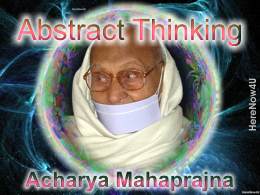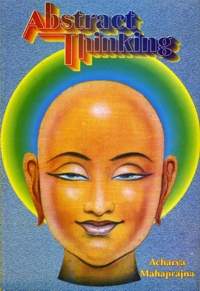
With the establishment of tolerance, fearlessness comes into being. The essence of all religion is fearlessness - it is the beginning and the end of all religious pilgrimage. The meaning of religion is fearlessness: Religion begins in fearlessness and fulfils itself though consummation in fearlessness. Veetaragata (dispassion) starts with fearlessness and it also finds its perfection in fearlessness.
The man who is not free from fear, cannot become religious. Such a person cannot be free from fear, cannot become religious. Such a person cannot perform kayotsarga. Kayotsarga means freedom from the cares of the body. This is the starting point of fearlessness.
To be free from the cares of the body appears to be simple, yet it is not easy to be so free. It is not easy to get rid of fear, relating to the physical organism. "This body is mine!" Fear is born in the very instant we say it. This feeling that the body is mine - is the fundamental cause of the birth of fear. Attachment with the body creates fear: Attachment and fear are not two different things. Wherever there is attachment, fear is bound to be and vice versa. To give up attachment is to be free from fear and freedom from fear means freedom from attachment.
With the establishment of the goal, just as one's morale rises, fearlessness also increases. Fearlessness is the essence of non-violence. Fear leads to cowardice, which enfeebles the mind and increases the tendency towards violence. It is not only the fear of darkness which stands in the way of the growth of non-violence; there are other fears, too-such as the fear of death, fear of pain, fear of being harmed, fear of loss, and many other known and unknown fears. These pave the way for one to fall from the ideal of non-violence. But a man with a definite aim never swerves from his path. He knows that he is not after luxury and is not therefore too much concerned with the loss of means of comfort. Prosperity naturally follows such a person. The same holds true of death and other fears. He says to himself, "I shall speak the truth and I shall be true to myself and to others, irrespective of consequences." A non-violent person has to put up with threats both pseudo- and real. Because he is wide-awake, he is never perplexed.
And there is one fear, still greater than those mentioned above - fear born of imagination. When a person feels that he would be left alone if he perseveres in the path of righteousness, this feeling constitutes a hurdle in his way. A non-violent person should not be afraid of standing alone. He goes on because he is convinced that he is following the right path. Ultimately he will be vindicated and the world would come to appreciate him rightly. The life of Lord Christ is a living proof thereof. Acharya Bhikshu too belonged to this category of great men. Only a man, who walks fearlessly indifferent to other people's accusations, non-cooperation, etc., can progress along the path of non-violence.
Fear creates more fear and fearlessness greater fearlessness. The biological doctrine of 'like produces like' also applies to man's mental dispositions. From the psychological point-of-view, the emotional behaviour and emotional experience are both produced by the hypothalamus. There are centres in our body from where different kinds of tendencies flow. Passions originate in the body. These are produced by the hypothalamus. The hypothalamus is also the seat of fear.
Only that man can impart to others the sense of fearlessness, who has himself achieved it, and from whom the vibrations of fearlessness eradiate in all directions. These vibrations suffuse the whole atmosphere with fearlessness. Only that man is truly fearless who radiates fearlessness. Only that man can impart fearlessness to others who is himself fearless.
Fear is a very important emotion. It is necessary to get rid of it. Only through fearlessness can fear be ended.
 Acharya Mahaprajna
Acharya Mahaprajna

